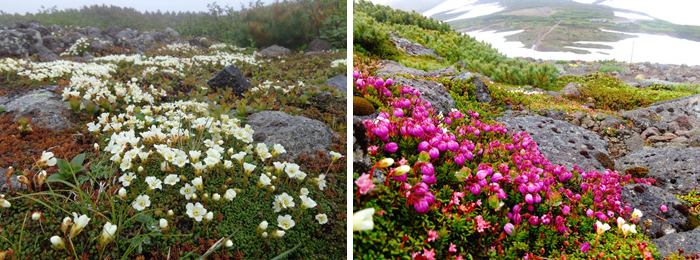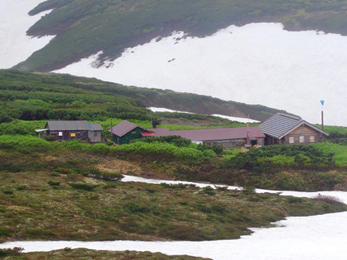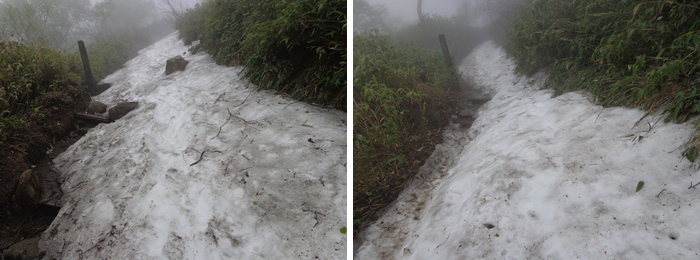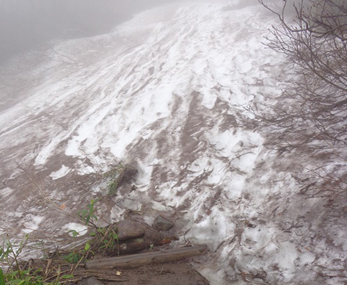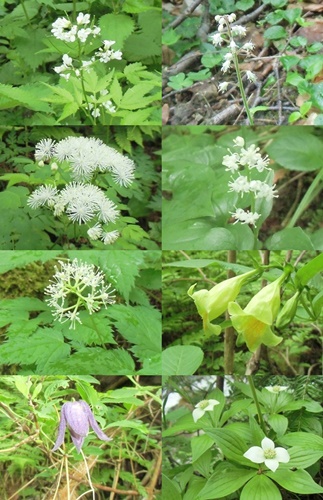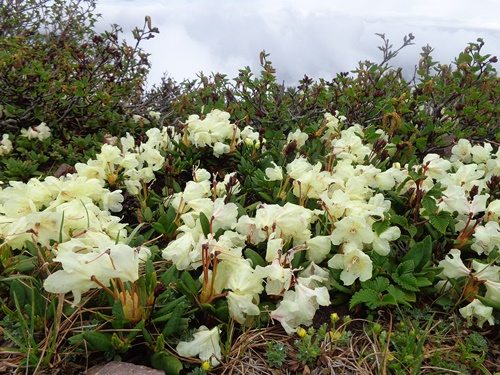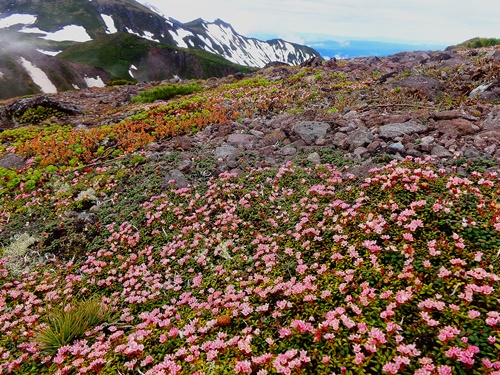Although the flowers had been blooming early in strong wind areas as a result of the high temperatures in early June, the rate of blooming seems to have slowed somewhat recently.
The Diapensia lapponica subsp. obovata and Loiseleuria procumbens are in various stages of blooming, with some already ending, some in peak viewing season, and some just budding.
Of course, the flowers begin blooming where the snow has melted, so the true blooming season is yet to come. The early flowers that can be seen now are those mentioned above.
Although the Phyllodoce caerulea have not yet formed communities, they were very noticeable in the rain.
The weather forecast predicts plenty of sunshine and rising temperatures in the coming days.
I’m looking forward to better weather.
I should mention that the snow is melting at Ishimuro with amazing speed. The buildings are now completely free of snow. The nearby flowers should start blooming soon.
However, there are large snowy gorges here and there in the direction of Kumonotaira and the trail toward the Akaishi River is completely covered with snow. Climbers should be sure to bring all of the gear needed to climb safely.
Photos: Diapensia lapponica subsp. obovata (left), Phyllodoce caerulea (center), and Ishimuro (right) Jun. 19
The Diapensia lapponica subsp. obovata and Loiseleuria procumbens are in various stages of blooming, with some already ending, some in peak viewing season, and some just budding.
Of course, the flowers begin blooming where the snow has melted, so the true blooming season is yet to come. The early flowers that can be seen now are those mentioned above.
Although the Phyllodoce caerulea have not yet formed communities, they were very noticeable in the rain.
The weather forecast predicts plenty of sunshine and rising temperatures in the coming days.
I’m looking forward to better weather.
I should mention that the snow is melting at Ishimuro with amazing speed. The buildings are now completely free of snow. The nearby flowers should start blooming soon.
However, there are large snowy gorges here and there in the direction of Kumonotaira and the trail toward the Akaishi River is completely covered with snow. Climbers should be sure to bring all of the gear needed to climb safely.
Photos: Diapensia lapponica subsp. obovata (left), Phyllodoce caerulea (center), and Ishimuro (right) Jun. 19
